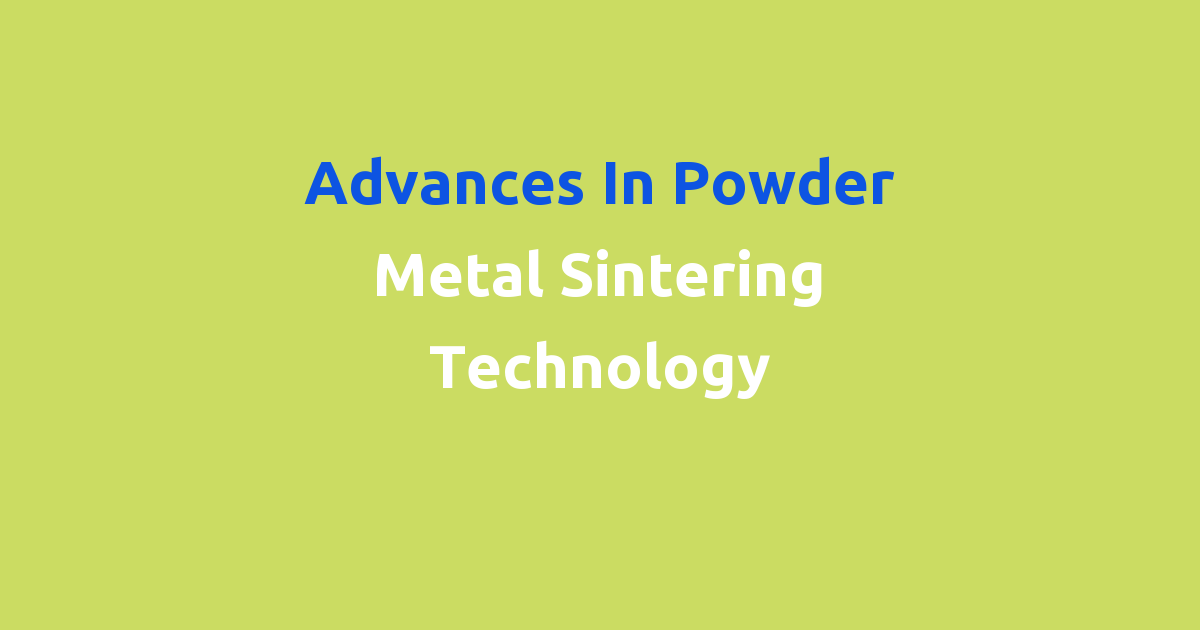Progress in the technology of sintering powder metal has been made.
Advances in Powder Metal Sintering Technology
Introduction
Powder metallurgy is a widely used manufacturing process in the field of engineering. It involves the production of components from metal powders through the process of compaction and sintering. Sintering is a crucial step in this process, as it involves heating the compacted powder to a temperature below its melting point, causing the particles to bond together. This results in a strong and durable product that is used in various industries such as automotive, aerospace, and electronics.
Problem Statement
While powder metal sintering technology has been around for decades, there are still some challenges and limitations associated with the process. One of the main issues is related to the quality of the final product. Traditional sintering methods may result in poor density and strength of the components, leading to subpar performance and reliability. Additionally, the process can be time-consuming and energy-intensive, adding to the overall production costs. Therefore, there is a need for advancements in powder metal sintering technology to address these challenges and improve the efficiency and quality of the process.
Existing System
The traditional method of powder metal sintering involves compacting the metal powder into a desired shape using a mold or die, followed by heating the compacted powder in a furnace. This process allows the particles to bond together, forming a solid component. However, there are some limitations to this method. The heating process can lead to uneven distribution of temperature, resulting in variations in density and strength across the component. This can impact the overall performance and reliability of the part.
Disadvantages
Some of the disadvantages of traditional powder metal sintering technology include:
1. Poor density and strength of components.
2. Uneven distribution of temperature leading to variations in quality.
3. Time-consuming and energy-intensive process.
4. Limited control over the final product characteristics.
Proposed System
To address the limitations of the existing system, advances in powder metal sintering technology have been made. One of the key advancements is the use of advanced heating techniques such as microwave sintering and spark plasma sintering. These techniques allow for more precise control over the heating process, resulting in better density and strength of the components. Additionally, the use of computer simulations and modeling has helped in optimizing the sintering parameters to achieve the desired properties of the final product.
Advantages
Some of the advantages of the proposed system include:
1. Improved density and strength of components.
2. Better control over the sintering process.
3. Reduced production time and energy consumption.
4. Enhanced performance and reliability of the final product.
5. Cost-effectiveness and efficiency in production.
Features
The advanced powder metal sintering technology comes with several key features that set it apart from the traditional methods. Some of the notable features include:
1. Precise control over the heating process.
2. Optimization of sintering parameters through computer simulations.
3. Use of advanced heating techniques such as microwave sintering and spark plasma sintering.
4. Enhanced quality and performance of the components.
5. Cost-effective and efficient production process.
Conclusion
In conclusion, advances in powder metal sintering technology have revolutionized the manufacturing process in the field of engineering. The proposed system addresses the limitations of the existing system and offers a more efficient and cost-effective solution for producing high-quality components. By leveraging advanced heating techniques and computer simulations, manufacturers can now achieve better density and strength of the final product, resulting in improved performance and reliability. Overall, the advancements in powder metal sintering technology have paved the way for a brighter future in the field of engineering and manufacturing.

